BELARUS
TRAVEL GUIDE
Information
Read
Minsk [1]
Russian | Belarusian [1]
207, 600km2 [1]
9,448,908 (2020) [2]
Belarusian Ruble (BYN) [3]
6,084 US [3]
Annual Average Income
0.817 (#50 world) [4]
Based on ‘The Human Development Index’, which analyses the country’s life expectancy, education, and per capita income
11,501,000 (#36 world) [5]
Annual Average Tourism
37/ 50
Based on my opinion of the 50 European Countries



Facts
Read
On the 10th of July 1994, Alexander Lukashenko was the first elected president of Belarus, and to this day, continues to govern the country. [6]
Although he is quite favourable in Belarus, in the West, many politicians, journalists, and human rights activists consider him as a dictator. [6]
In fact, they tend to use the quote from George Bush’s Administration party (Former US President) that he is ‘Europe’s Last Dictator’. [6]

(Alexander Lukashenko) [7]
In 1939, the 900km2 reserve became an established national park. [6]
On the 13th of December 1992, the national park was awarded UNESCO World heritage status. [6]
In 1993, the national park was awarded the status of ‘Biosphere Reserve’. [6]
This allowed the opportunity for specialised ecological study to assess environment changes occurring around the world. [6]
[expand title=””]
Thus, conferences, library facilities, and accommodation, have been established for the hundred scientist that work here. [6]
Formally the national park was a ‘playground’ for Polish Princes and Russian Tsars, in which the latter were the last private owners (1888 -1917). [6]
After the revolution, the park was occupied by the Soviet union, until Belarus became an Independent Republic. [6]
The national park consist of 900+ plants, which includes 26 types of trees, 650 year old oak trees, and 138 shrub pieces. [6]
Two-thirds of these plants are only found in the national park. [6]
In regards to animals, the park comprises of 212 bird species and 59 mammals. [6]
The most famous mammal being the European Bison. [6]
By the 1920s, this exotic animal was nearly extinct, however through careful management there is over 2500 in Eastern Europe, with the largest population inhabited in the park. [6]
You can easily see them freely roaming while on the road or path of the park. [6]
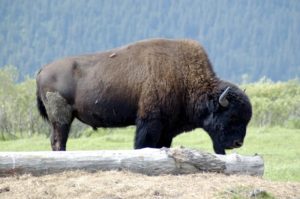
(Bison) [8]
The park is 70km north from the city of ‘Brest’, and 20km from the town of ‘Kamenyets’. [6]
There are several buses that you can take there and back from either Brest or Kamenyets, however there is no ‘public transport’ within the park. [6]
Yet don’t be discouraged, as there are official tours that operate within the park. [6]
If you want to get a full experience, you can stay overnight to the available three hotels at the park’s gates. [6]
The park gates, also have many visitor facilities, which includes a cafe, restaurant, sauna, pool, bicycle hire, an animal enclosure, and the museum of nature, which provides an overview of the park. [6]
During the festive season, there is a special visit from Father Frost, the Slavic version of Santa Claus. [6]
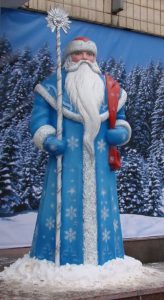
(Father Frost) [9]
[/expand]
On the 26th of April 1986 (1:23am) the Chernobyl Nuclear Power Plant in Soviet Ukraine exploded. [6]
Prior to the Fukushima incident in 2011, it was the worst commercial nuclear event that happened in the world. [6]
This brought major economical, ecological, and social impacts in Belarus. [6]
The economic damage is believed to be 235 Billion US dollars. [6]
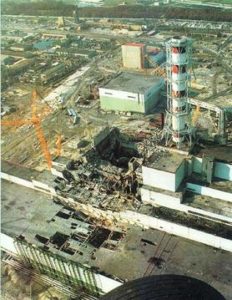
(Chernobyl) [10]
[expand title=””]
The ecological damage is 21% of the republic being contaminated with ‘caesium -137’; mostly in the Southern West (Gomel District) of Belarus. [6]
The social damage involves more than 135,000 people from 470 villages and towns having to leave their homes, and relocate to safer regions in Belarus and the greater Soviet Union. [6]
Furthermore, Thyroid cancer has increased severely over the years. [6]
Over 500,000 people have the cancer, which has been connected to the incident. [6]
So how did this catastrophe occur?
It started with a fault in the fourth reactor. [6]
The external electricity supply was lost, which triggered a steam explosion, which triggered a fire, which triggered a series of explosions, which then triggered a nuclear meltdown. [6]
The reactor was completely destroyed, which caused its roof to propel into the sky. [6]
From here, an inrush of oxygen mixed with the reactor’s fuel produced graphite fire, and other radioactive materials began to spread (e.g. radioactive isotopes). [6]
In the town of Pripyat (population of 50,000), which was only 2km from the Chernobyl Power Plant, recorded that the locals could see an ‘active glowing cloud’ hovering above the Plant. [6]
Later that day, the townsfolk of Pripyat were evacuated from the town. [6]
To this day, Pripyat is a ghost town that hasn’t been touched since 1986. [6]
Everything was left exactly the way it was. [6]
The first response from the Soviets after the incident was to say and do nothing. [6]
That is, not to release any information locally or internationally to neighboring countries of Europe. [6]
And to not aid the people in the affected area, other than an evacuation. [6]
Eventually assistance came to the scene, a huge cleanup campaign comprised between 300,000 and 600,000 soldiers and liquidators. [6]
During the campaign, several hundred people were hospitalized, which involved 31 dying. [6]
Of the 31, 28 were from Acute Radiation Exposure. [6]
As the authorities began to realise the magnitude of the disaster, hundreds of thousands were evacuated. [6]
By the end of the year, a short-term concrete ‘shield’ covered over the reactor. [6]
However to this day, the intended short-term protector is still covering the reactor, which has begun to deteriorate. [6]
There has been discussions to replace the protector with a new shield, which will cost 1.5 billion US dollars. [6]
[/expand]
Belarus has a relatively low terrain. [6]
Its mean elevation is 160m above sea level. [6]
While its highest point, Mount Dzherzhinskaya, is only 345m above sea level. [6]
The landscape consist of 38% forest, 70% Natural Vegetation, 20,000 rivers, and 11,000 lakes. [6]
Belarus’s most famous ‘Surrealist’ Painter. [6]
His artwork is very beautiful and unique, type his name ‘Marc Chagall’ on google images, to see it for yourself.
He was born in 1887, and died in 1985 (97 years old). [6]
He came from a Jewish family with 9 siblings. [6]
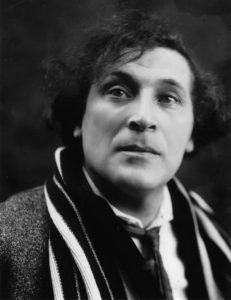
(Marc Chagall) [11]
[expand title=””]
He records his childhood as a happy one, yet life was difficult for the family. [6]
His father was an unskilled worker in a local fish factory. [6]
In 1906, he moved to St Petersburg to study art, although he had no moral support from his family. [6]
In 1910, he moved to Paris with a sponsorship from Max Vinaver. [6]
In 1914, he returned to his beloved home city of Vitebsk, and married his fiancée Bella, whom was a major influence to his art. [6]
In 1917, he established, directed, and taught at the ‘School of Arts’ in Vitebsk. [6]
At the outbreak of World War II, he and his family moved to Southern France, and then finally to the USA. [6]
In 1944, his wife Bella had died, which completely distraught him, and cut him off from painting for sometime. [6]
His creativity returned when he began a relationship with Virginia Haggard. [6]
They had a son together. [6]
In 1947, he returned to France, and married Valentine Brodsky 5 years later. [6]
[/expand]
Between the 15th and 16th century, many orthodox churches served dual purposes. [6]
One for worship, and the other as a fortified sanctuary to protect the townsfolk from aggressors. [6]
Some of these churches still remain today. [6]
[expand title=””]
‘Saint Michael Cathedral’ (1407) in the village of Synkovichy. [6]
The ‘Nativity of the Blessed Virgin Mary’ (1524) in the village of Murovanka. [6]
[/expand]
During World War II, the Germans occupied Soviet Belarus for 3 years. [6]
In that time, they destroyed and burned 9200 villages, and 209 towns, which included 80% of Minsk, 90% of Vitebsk, and 90% of Brest being damaged. [6]
One quarter of the population had perished during their occupation, which comprised of 2.2 million deaths. [6]
Their population didn’t recover beyond its pre-war total until 1971. [6]
[expand title=””]
Furthermore, 380,000 Belarusians were deported to Germany as slave laborers, in which they never returned. [6]
One of the most heartfelt memorials relating to the massacres is the memorial complex at ‘Khatyn’ (75km from Minsk). [6]
The memorial comprises of a 6 metre Bronze sculpture, 26 chimneys, 2 enormous granite plates, a small museum, and the ‘wall of grief’. [6]
The sculpture, which is called the ‘Unconquered man’, is of a man who was the only adult survivor holding his dead son. [6]
The chimneys, which were the only structures left standing, represent the site of each of the 26 houses that were burnt to ashes. [6]
Each Chimney has a plaque of the names who lived in the house. [6]
The granite plates, which are slanted on an angle, represents the ‘collapse roof’ of the barn that the villagers were murdered. [6]
The wall of grief is a memorial that represents the camp victims who lost their lives. [6]
The memorial’s museum contains a photo montage of the destruction that occurred in the village. [6]
The utter devastation occurred on the 22nd of March in 1943. [6]
There was a confrontation that occurred in the vicinity of the village (6km away), where a revolutionary group attacked a group of Nazis, in which resulted a German officer being killed. [6]
Whether or not this ‘attack’ was known by the villagers, it didn’t make a difference. [6]
All the townsfolk were escorted from their homes by gun point into a barn. [6]
While everyone was inside, the doors were locked, the roof was covered in straw, and the barn was covered in petrol. [6]
It was set alight, while the soldiers positioned themselves around the barn to shoot any villager who managed to escape. [6]
149 individuals died, while 75 of those were children. [6]
Only 1 adult and 3 children managed to survive. [6]
The adult was a 56 year old blacksmith named Joseph Kaminsky. [6]
In the ordeal, he was wounded, severely burned, and became unconscious. [6]
He only regained his consciousness once the Nazis had already left. [6]
What he saw was a mass of dead corpses surrounding him, he then searched around to find his son. [6]
He managed to find him barely alive with bullet wounds in the abdomen, and severely burned. [6]
He tried to cater to his wounds, however once he cradled him in his arms, he died. [6]
And so, is the only sculpture in the memorial, the ‘unconquered man’. [6]
There are some Jewish survivors who have recalled their experiences of Nazi occupation in Belarus, one notable lady is ‘Frieda Wulfovna’.[6]
[/expand]
In 1253, King Mindaugas, the first ruler of the Grand Duchy of Lithuania established Novogrudok as the capital, which is in modern Belarus. [6]
The town is located on a hill 323m above sea level, which is a really high altitude for Belarus (highest point: 345m). [6]
The settlement had an imposing 14th century castle, with a 7 tower feature that made it the largest and most significant fortress in the duchy. [6]
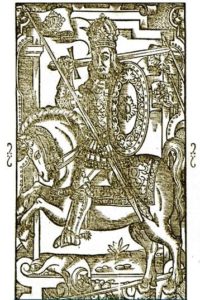
(Mindaugas) [12]
[expand title=””]
However, recurring warfare destroyed most of the town. [6]
Today, little of its historic structure remains, including the castle which is mostly in ruins. [6]
[/expand]
Regarded as one of the earliest settlements in Eastern Europe, which was founded in 862AD. [6]
For Belarus, it was the first ‘state’ to be established within Modern Belarus borders. [6]
That is why, it is referred to as ‘the cities of all Belarusian cities’. [6]
Between the 10th and 12th century, its power stretched from the Baltic coast in the west, to the Russian town of Smolensk in the East. [6]
[expand title=””]
Vikings that tried to invade, described the city as a settlement that was heavily fortified. [6]
Famous nationals who were born in Polotsk include;
‘Simeon of Polotsk’ (1629-1680), who was known as a famed poet. [6]

(Simeon of Polotsk) [13]
Francisk Skoryna (1468-1451), who was the first person to translate the bible in Belarusian. [6]
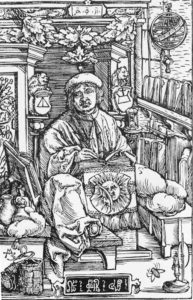
(Francisk Skoryna) [14]
And Vyseslav Bryachislavich ‘the Sorcerer’ (1039-1101), was the most powerful ruler in Polotsk history. [6]
It is said, that people believed Vyseslav was a ‘magical shape shifter’. [6]
That is, he had the ability to transform to any animal at his will. [6]
His reign lasted for an incredible 67 years, from 1044 to 1101. [6]
During that time the iconic ‘Cathedral of St Sophia’ was built (1044 -1066). [6]
In the town, there’s a statue of him, in which he’s covered in wolf skin, with eagles on his back. [6]

(Vyseslav Bryachislavich) [15]
In 1307, the town was officially part of the ‘Grand Duchy of Lithuania’. [6]
The town continued to prosper, as it was the most vital trading centre in the duchy. [6]
However the town began to gradually decline from recurring warfare. [6]
Eventually Polotsk became part of the Russian Empire. [6]
In 1710, Its iconic cathedral was blown up by the orders of Tsar Peter the Great. [6]

(Peter the Great) [16]
Between 1738 and 1750, the cathedral was rebuilt by the Poles as a ‘Baroque Roman Catholic Cathedral’. [6]
Today the cathedral has some of its original architecture from the 11th century, which comprise of its eastern elevation, and some of its basement walls. [6]
However, its original 7 imposing towers have been destroyed. [6]
In 1812, the town was home to 2 historic battles between the Russians and Napoleon’s French Army. [6]
On the 21st of November 1941, the Nazis murdered all the Jews in Polotsk, which was around 8000 people. [6]
[/expand]
The most famous festival in Belarus is the ‘Slavic Bazaar’, which takes place in the ‘Cultural Capital’ of Belarus, Vitebsk. [6]
This event is known as an ‘International Song and Culture Festival’, which annually occurs for one week in July. [6]
The musical program of the festival is a celebration of Slavic music. [6]
The main artists that participate are from the countries of Russia, Belarus, and Ukraine. [6]
[expand title=””]
However, there are artist from other Slavic and non-Slavic countries. [6]
During the week the city transforms into an enormous street party, while 5000+ artists perform on various streets and at the 6500 capacity domed Amphitheatre. [6]
[/expand]

History
Read
BC
It is believe that early civilization had begun from the Paleolithic Period (100K – 40K BC). [6]
However the available evidence demonstrates, that the first significant settlement emerged between 24K to 27K years ago. [6]
7th – 9th Century
The first known people to inhabit the land were the Dryhavichy, Krivichi and Radzimichy. [6]
These tribes came together, and formed the first Slavic alliance. [6]
From there, principalities began to form in the town of Polotsk, Turov, and Smolensk. [6]
862AD – 13th Century
Polotsk was the ‘first’ capital of proto Belarus, which became known to existence in 862. [6]
The first prince of the principality was Rogvolod, who reigned from 945 to 978. [6]

(Rogvolod) [17]
In the 11th century, the principality reached the zenith of its power from Prince Vyseslav Bryachislavich, he was known as the ‘Sorcerer’, and was the most powerful ruler in Polotsk history. [6]

(Vyseslav Bryachislavich) [15]
[expand title=””]
In the beginning of the 13th century, the foundations of the Belarusian language began to form. [6]
[/expand]
13th Century – 1569
In the 12th century, a number of Belarusian lands & principalities were brought together into the Grand Duchy of Lithuania. [6]
In 1253, King Mindaugas, the first ruler of the Grand Duchy of Lithuania, established Novogrudok as the capital, which is in modern Belarus. [6]

(Mindaugas) [12]
In 1323, the capital was transferred to Vilnius. [6]
[expand title=””]
By the 15th century, the Duchy reached the zenith of its power and influence from King Vytautas (r. 1392 – 1430). [6]

(Vytautas) [18]
[/expand]
1569 – 1795
On the 2nd of February in 1386, ‘Jogaila’ who was the Grand Duke of Lithuania, became the King of Poland, which established a one single monarch between the two nations. [6]
In 1410, Poland and Lithuania joint forces to defeat the Teutonic order (Germanic Catholic military order), in the Battle of Grunwald. [6]
This event brought the two nations closer together. [6]
In 1563, the alliance of the Kingdom of Poland, and the Grand Duchy of Lithuania, was solidified into one federative state called the Polish-Lithuanian Commonwealth, or Rzeczpospolita. [6]
[expand title=””]
The territory extended from the Baltic Sea in the north, to the Black Sea in the South. [6]
In 1654, Russian seized an opportunity to invade Rzeczpospolita while the nation was having domestic difficulties. [6]
The invasion ensured till 1667. [6]
During that time, a large area of proto Belarus was occupied. [6]
The occupation was devastation for the state as many towns fell into decay, and the population was reduced in half. [6]
Between 1700 and 1721, another war enticed more economic damaged, this time by the Swedes during the ‘North War’. [6]
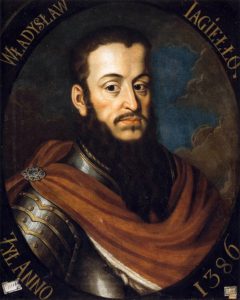
(Jogaila) [19]
[/expand]
1772 – 1917
Russia began to annex parts of Belarus in the 18th century. [6]
In 1772, the eastern part of Belarus was annexed to Russia. [6]
In 1793, the central part of Belarus was annexed to Russia. [6]
In 1795, the western and final part of Belarus was annexed to Russia. [6]
[expand title=””]
From there, the sovereign state of Rzeczpospolita cease to exist. [6]
In 1812, proto Belarus was the warzone between Napoleon’s French army and Russia. [6]
During the invasion, the state of Belarus’s economy and population diminished. [6]
After the war, the people of Belarus began to elicit democratic ideas, which led to the first ‘National Liberation Movement’. [6]
In 1830, their patriotism began an up-rise to restore the sovereign state of Rzeczpospolita and its national boundaries. [6]
However, the ‘revolution’ was suppressed by the Russian Empire. [6]

(Napoleon Bonaparte) [20]
In the 19th century, tension began to rise again, as the Russians Tsars continue to cling to power and suppress the opposition. [6]
For Belarus, their language was banned in written form, and their culture was also banned. [6]
Thus, ‘underground’ means were used to preserve the literature, art, folklore, and language. [6]
In 1864, Poland, Lithuania, and Belarus came together to rise up against ‘Tsarism’ in the National Liberation Movement. [6]
However, the ‘revolution’ failed yet again, in which more brutal suppression continued. [6]
In the 1880s, Belarusian students established a revolutionary organisation called ‘Gomon’. [6]
In 1903, the first national political party called the ‘Belarusian Socialist Gromada party’ was established. [6]
Their objective was to abolish monocracy, and to bring the Russian Federation as Democratic Republics. [6]
During World War I (1914-1918), the Belarusian territory was again a warzone, in which the German and Russian Empires fought. [6]
On the 7th of November 1917, an armed up-rise occurred in Saint Petersburg. [6]
Vladimir Ilyich Lenin, the leader of the Bolshevik Revolution, overthrew the provisional government of Alexander Kerensky, which ended monarchy and the Russian Empire. [6]
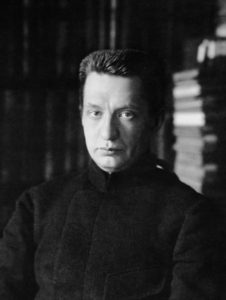
(Alexander Kerensky) [21]
On the 3rd of March 1918, Lenin conducted the ‘Treaty of Brest-Litovsk’ with Germany and Austria Hungary. [6]
This ended the Soviet’s participation in World War I, and territory was given to the two empires. [6]
Germany annexed the Baltic countries (Lithuania, Estonia, and Latvia), Poland, and a large portion of Belarus. [6]
While Austria Hungary was given Ukraine and a small portion of Belarus. [6]
Lenin had little choice to surrender, as the army of the Russian Empire had fell into disorder. [6]
Thousands of soldiers had already given up on the war, and were heading back home. [6]
Rebellion was everywhere in the post Russian Empire. [6]
Thus, this treaty gave Lenin enough breathing space to establish control of his new nation. [6]
At the end of the war, proto Belarus suffered from widespread destruction. [6]

(Lenin) [22]
[/expand]
1918 – 1919
The Belarusian Republic declared their independence on the 25th of March 1918, despite Germany occupying the territory. [6]
The German Russian treaty was overturned by the ‘Treaty of Versailles’ on the 28th of June 1919 by the Allies victory in World War I, thus German occupation came to an end. [6]
1919 – 1991
On the 17th of February 1919, the territories of Belarus and Lithuania were joint together under the ‘Lithuanian Belarusian Soviet Socialist Republic’ of the Soviet Union, in which Vilnius was allocated the capital. [6]
However war between Poland and the emerging Soviet union continued, in which much of the new state was under Polish occupation. [6]
On the 31st of July 1920, the ‘Belarusian Soviet Socialist Republic’ became a separate entity as the polish troops were expelled from the region. [6]
On the 18th of March 1921, the ‘Treat of Riga’ ended the Polish-Soviet War, in which the western Territories of Belarus was annexed to Poland. [6]
[expand title=””]
The borders remained till the outbreak of World War II. [6]
Lenin’s USSR became a world power, in which he brought diverse cultures and races together. [6]
His leadership was then transfer to Iosif Dzhugashvili, better known as ‘Stalin’. [6]
Stalin’s rule brought a dark history to the Soviet Union. [6]
Millions of his people were imprisoned, tortured, and killed across the USSR, due to the fear of internal opposition (Belarusian nationalist were viciously suppressed). [6]
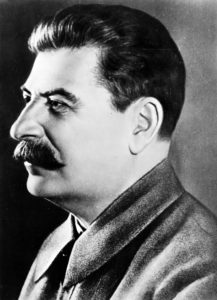
(Stalin) [23]
[/expand]
22 June 1941 – 9 May 1945
On the 23rd of August 1939, the Soviets and Germans established a ‘secret’ alliance through the ‘Molotov Ribbentrop Pact’, in which gave Hitler the permission to invade Poland without an intervention from the Soviet Union. [6]
On the 1st of September 1939, Germany invaded Poland, which commenced the beginning of World War II. [6]
On the 17th of September 1939, The Soviet Union invaded Poland. [6]
Therefore, Poland was simultaneously being attacked by Germany from the west, and the Soviet Union from the East. [6]
[expand title=””]
This was all done, while Western Europe ignored what was happening. [6]
However, this short alliance was about to be destroyed, when word of massive German troops were increasingly close to the Soviet Border. [6]
Stalin did nothing to prepare, and continued to believe in the Alliance. [6]
On the 22nd of June 1941, this alliance was officially broken when the Germans unleashed ‘Operation Barbarossa’, an action to ‘wipe out’ the Soviet nation. [6]
The city of Brest, which was on the western border of the Soviet Union (Modern Belarus), was invaded by foot. [6]
The city fell within a few hours, however the troops at ‘Brest fortress’, defended for a remarkable 6 weeks. [6]
This got the attention of the Soviet Union daily news, which inspired the citizens into a patriotic frenzy. [6]
That is why the Russians call it the Great Patriotic War. [6]
The city of Minsk was invaded by air through aerial bombing. [6]
The city fell within 6 days. [6]
After 2 months of German Warfare, Belarus was completely occupied by the Germans. [6]
The occupation, which lasted for 1100 days, was painful and ruthless. [6]
Hitler had the belief that the Slavic race was a ‘subhuman’ race, and they had to be exterminated. [6]
Men, women, and even children were imprisoned, tortured, and killed. [6]
Food became very scarce, many people died from hunger. [6]
Public parks were a stage of mass hangings. [4]
A total of 25% of Belarus’s population was killed (~2.2 million). [6]
Thousands of Belarusian villages were burned and destroyed. [6]
380,000 Belarusians were deported to Germany as slave laborers, in which they never returned. [6]
After the War, it is believed that 24 million people of the Soviet Union died. [6]
On the 3rd of July in 1944, the Soviet troops liberated the Belarusians from the Nazis, and that day has become their Independence Day. [6]
On August 1945, a Soviet and Polish treaty established 17 districts of Bialystok and 3 of Brest (not the city) to be annexed to Poland. [6]
[/expand]
1991+
On the 25th of August 1991, Belarus declared full independence from the Soviet Union. [6]
Later that year, on the 19th of September, Belarus officially was named the ‘Republic of Belarus’. [6]
On the 10th of July 1994, Alexander Lukashenko was elected as the first president of Belarus. [6]

(Alexander Lukashenko) [7]









GUIDE

INFORMATION
Minsk [1]
Russian | Belarusian [1]
207, 600km2 [1]
9,448,908 (2020) [2]
Belarusian Ruble (BYN) [3]
6,084 US [3]
Annual Average Income
0.817 (#50 world) [4]
Based on ‘The Human Development Index’, which analyses the country’s life expectancy, education, and per capita income
11,501,000 (#36 world) [5]
Annual Average Tourism
37/ 50
Based on my opinion of the 50 European Countries
FACTS
On the 10th of July 1994, Alexander Lukashenko was the first elected president of Belarus, and to this day, continues to govern the country. [6]
Although he is quite favourable in Belarus, in the West, many politicians, journalists, and human rights activists consider him as a dictator. [6]
In fact, they tend to use the quote from George Bush’s Administration party (Former US President) that he is ‘Europe’s Last Dictator’. [6]

(Alexander Lukashenko) [7]
In 1939, the 900km2 reserve became an established national park. [6]
On the 13th of December 1992, the national park was awarded UNESCO World heritage status. [6]
In 1993, the national park was awarded the status of ‘Biosphere Reserve’. [6]
This allowed the opportunity for specialised ecological study to assess environment changes occurring around the world. [6]
[expand title=””]
Thus, conferences, library facilities, and accommodation, have been established for the hundred scientist that work here. [6]
Formally the national park was a ‘playground’ for Polish Princes and Russian Tsars, in which the latter were the last private owners (1888 -1917). [6]
After the revolution, the park was occupied by the Soviet union, until Belarus became an Independent Republic. [6]
The national park consist of 900+ plants, which includes 26 types of trees, 650 year old oak trees, and 138 shrub pieces. [6]
Two-thirds of these plants are only found in the national park. [6]
In regards to animals, the park comprises of 212 bird species and 59 mammals. [6]
The most famous mammal being the European Bison. [6]
By the 1920s, this exotic animal was nearly extinct, however through careful management there is over 2500 in Eastern Europe, with the largest population inhabited in the park. [6]
You can easily see them freely roaming while on the road or path of the park. [6]

(Bison) [8]
The park is 70km north from the city of ‘Brest’, and 20km from the town of ‘Kamenyets’. [6]
There are several buses that you can take there and back from either Brest or Kamenyets, however there is no ‘public transport’ within the park. [6]
Yet don’t be discouraged, as there are official tours that operate within the park. [6]
If you want to get a full experience, you can stay overnight to the available three hotels at the park’s gates. [6]
The park gates, also have many visitor facilities, which includes a cafe, restaurant, sauna, pool, bicycle hire, an animal enclosure, and the museum of nature, which provides an overview of the park. [6]
During the festive season, there is a special visit from Father Frost, the Slavic version of Santa Claus. [6]

(Father Frost) [9]
[/expand]
On the 26th of April 1986 (1:23am) the Chernobyl Nuclear Power Plant in Soviet Ukraine exploded. [6]
Prior to the Fukushima incident in 2011, it was the worst commercial nuclear event that happened in the world. [6]
This brought major economical, ecological, and social impacts in Belarus. [6]
The economic damage is believed to be 235 Billion US dollars. [6]

(Chernobyl) [10]
[expand title=””]
The ecological damage is 21% of the republic being contaminated with ‘caesium -137’; mostly in the Southern West (Gomel District) of Belarus. [6]
The social damage involves more than 135,000 people from 470 villages and towns having to leave their homes, and relocate to safer regions in Belarus and the greater Soviet Union. [6]
Furthermore, Thyroid cancer has increased severely over the years. [6]
Over 500,000 people have the cancer, which has been connected to the incident. [6]
So how did this catastrophe occur?
It started with a fault in the fourth reactor. [6]
The external electricity supply was lost, which triggered a steam explosion, which triggered a fire, which triggered a series of explosions, which then triggered a nuclear meltdown. [6]
The reactor was completely destroyed, which caused its roof to propel into the sky. [6]
From here, an inrush of oxygen mixed with the reactor’s fuel produced graphite fire, and other radioactive materials began to spread (e.g. radioactive isotopes). [6]
In the town of Pripyat (population of 50,000), which was only 2km from the Chernobyl Power Plant, recorded that the locals could see an ‘active glowing cloud’ hovering above the Plant. [6]
Later that day, the townsfolk of Pripyat were evacuated from the town. [6]
To this day, Pripyat is a ghost town that hasn’t been touched since 1986. [6]
Everything was left exactly the way it was. [6]
The first response from the Soviets after the incident was to say and do nothing. [6]
That is, not to release any information locally or internationally to neighboring countries of Europe. [6]
And to not aid the people in the affected area, other than an evacuation. [6]
Eventually assistance came to the scene, a huge cleanup campaign comprised between 300,000 and 600,000 soldiers and liquidators. [6]
During the campaign, several hundred people were hospitalized, which involved 31 dying. [6]
Of the 31, 28 were from Acute Radiation Exposure. [6]
As the authorities began to realise the magnitude of the disaster, hundreds of thousands were evacuated. [6]
By the end of the year, a short-term concrete ‘shield’ covered over the reactor. [6]
However to this day, the intended short-term protector is still covering the reactor, which has begun to deteriorate. [6]
There has been discussions to replace the protector with a new shield, which will cost 1.5 billion US dollars. [6]
[/expand]
Belarus has a relatively low terrain. [6]
Its mean elevation is 160m above sea level. [6]
While its highest point, Mount Dzherzhinskaya, is only 345m above sea level. [6]
The landscape consist of 38% forest, 70% Natural Vegetation, 20,000 rivers, and 11,000 lakes. [6]
Belarus’s most famous ‘Surrealist’ Painter. [6]
His artwork is very beautiful and unique, type his name ‘Marc Chagall’ on google images, to see it for yourself.
He was born in 1887, and died in 1985 (97 years old). [6]
He came from a Jewish family with 9 siblings. [6]

(Marc Chagall) [11]
[expand title=””]
He records his childhood as a happy one, yet life was difficult for the family. [6]
His father was an unskilled worker in a local fish factory. [6]
In 1906, he moved to St Petersburg to study art, although he had no moral support from his family. [6]
In 1910, he moved to Paris with a sponsorship from Max Vinaver. [6]
In 1914, he returned to his beloved home city of Vitebsk, and married his fiancée Bella, whom was a major influence to his art. [6]
In 1917, he established, directed, and taught at the ‘School of Arts’ in Vitebsk. [6]
At the outbreak of World War II, he and his family moved to Southern France, and then finally to the USA. [6]
In 1944, his wife Bella had died, which completely distraught him, and cut him off from painting for sometime. [6]
His creativity returned when he began a relationship with Virginia Haggard. [6]
They had a son together. [6]
In 1947, he returned to France, and married Valentine Brodsky 5 years later. [6]
[/expand]
Between the 15th and 16th century, many orthodox churches served dual purposes. [6]
One for worship, and the other as a fortified sanctuary to protect the townsfolk from aggressors. [6]
Some of these churches still remain today. [6]
[expand title=””]
‘Saint Michael Cathedral’ (1407) in the village of Synkovichy. [6]
The ‘Nativity of the Blessed Virgin Mary’ (1524) in the village of Murovanka. [6]
[/expand]
During World War II, the Germans occupied Soviet Belarus for 3 years. [6]
In that time, they destroyed and burned 9200 villages, and 209 towns, which included 80% of Minsk, 90% of Vitebsk, and 90% of Brest being damaged. [6]
One quarter of the population had perished during their occupation, which comprised of 2.2 million deaths. [6]
Their population didn’t recover beyond its pre-war total until 1971. [6]
[expand title=””]
Furthermore, 380,000 Belarusians were deported to Germany as slave laborers, in which they never returned. [6]
One of the most heartfelt memorials relating to the massacres is the memorial complex at ‘Khatyn’ (75km from Minsk). [6]
The memorial comprises of a 6 metre Bronze sculpture, 26 chimneys, 2 enormous granite plates, a small museum, and the ‘wall of grief’. [6]
The sculpture, which is called the ‘Unconquered man’, is of a man who was the only adult survivor holding his dead son. [6]
The chimneys, which were the only structures left standing, represent the site of each of the 26 houses that were burnt to ashes. [6]
Each Chimney has a plaque of the names who lived in the house. [6]
The granite plates, which are slanted on an angle, represents the ‘collapse roof’ of the barn that the villagers were murdered. [6]
The wall of grief is a memorial that represents the camp victims who lost their lives. [6]
The memorial’s museum contains a photo montage of the destruction that occurred in the village. [6]
The utter devastation occurred on the 22nd of March in 1943. [6]
There was a confrontation that occurred in the vicinity of the village (6km away), where a revolutionary group attacked a group of Nazis, in which resulted a German officer being killed. [6]
Whether or not this ‘attack’ was known by the villagers, it didn’t make a difference. [6]
All the townsfolk were escorted from their homes by gun point into a barn. [6]
While everyone was inside, the doors were locked, the roof was covered in straw, and the barn was covered in petrol. [6]
It was set alight, while the soldiers positioned themselves around the barn to shoot any villager who managed to escape. [6]
149 individuals died, while 75 of those were children. [6]
Only 1 adult and 3 children managed to survive. [6]
The adult was a 56 year old blacksmith named Joseph Kaminsky. [6]
In the ordeal, he was wounded, severely burned, and became unconscious. [6]
He only regained his consciousness once the Nazis had already left. [6]
What he saw was a mass of dead corpses surrounding him, he then searched around to find his son. [6]
He managed to find him barely alive with bullet wounds in the abdomen, and severely burned. [6]
He tried to cater to his wounds, however once he cradled him in his arms, he died. [6]
And so, is the only sculpture in the memorial, the ‘unconquered man’. [6]
There are some Jewish survivors who have recalled their experiences of Nazi occupation in Belarus, one notable lady is ‘Frieda Wulfovna’.[6]
[/expand]
In 1253, King Mindaugas, the first ruler of the Grand Duchy of Lithuania established Novogrudok as the capital, which is in modern Belarus. [6]
The town is located on a hill 323m above sea level, which is a really high altitude for Belarus (highest point: 345m). [6]
The settlement had an imposing 14th century castle, with a 7 tower feature that made it the largest and most significant fortress in the duchy. [6]

(Mindaugas) [12]
[expand title=””]
However, recurring warfare destroyed most of the town. [6]
Today, little of its historic structure remains, including the castle which is mostly in ruins. [6]
[/expand]
Regarded as one of the earliest settlements in Eastern Europe, which was founded in 862AD. [6]
For Belarus, it was the first ‘state’ to be established within Modern Belarus borders. [6]
That is why, it is referred to as ‘the cities of all Belarusian cities’. [6]
Between the 10th and 12th century, its power stretched from the Baltic coast in the west, to the Russian town of Smolensk in the East. [6]
[expand title=””]
Vikings that tried to invade, described the city as a settlement that was heavily fortified. [6]
Famous nationals who were born in Polotsk include;
‘Simeon of Polotsk’ (1629-1680), who was known as a famed poet. [6]

(Simeon of Polotsk) [13]
Francisk Skoryna (1468-1451), who was the first person to translate the bible in Belarusian. [6]

(Francisk Skoryna) [14]
And Vyseslav Bryachislavich ‘the Sorcerer’ (1039-1101), was the most powerful ruler in Polotsk history. [6]
It is said, that people believed Vyseslav was a ‘magical shape shifter’. [6]
That is, he had the ability to transform to any animal at his will. [6]
His reign lasted for an incredible 67 years, from 1044 to 1101. [6]
During that time the iconic ‘Cathedral of St Sophia’ was built (1044 -1066). [6]
In the town, there’s a statue of him, in which he’s covered in wolf skin, with eagles on his back. [6]

(Vyseslav Bryachislavich) [15]
In 1307, the town was officially part of the ‘Grand Duchy of Lithuania’. [6]
The town continued to prosper, as it was the most vital trading centre in the duchy. [6]
However the town began to gradually decline from recurring warfare. [6]
Eventually Polotsk became part of the Russian Empire. [6]
In 1710, Its iconic cathedral was blown up by the orders of Tsar Peter the Great. [6]

(Peter the Great) [16]
Between 1738 and 1750, the cathedral was rebuilt by the Poles as a ‘Baroque Roman Catholic Cathedral’. [6]
Today the cathedral has some of its original architecture from the 11th century, which comprise of its eastern elevation, and some of its basement walls. [6]
However, its original 7 imposing towers have been destroyed. [6]
In 1812, the town was home to 2 historic battles between the Russians and Napoleon’s French Army. [6]
On the 21st of November 1941, the Nazis murdered all the Jews in Polotsk, which was around 8000 people. [6]
[/expand]
The most famous festival in Belarus is the ‘Slavic Bazaar’, which takes place in the ‘Cultural Capital’ of Belarus, Vitebsk. [6]
This event is known as an ‘International Song and Culture Festival’, which annually occurs for one week in July. [6]
The musical program of the festival is a celebration of Slavic music. [6]
The main artists that participate are from the countries of Russia, Belarus, and Ukraine. [6]
[expand title=””]
However, there are artist from other Slavic and non-Slavic countries. [6]
During the week the city transforms into an enormous street party, while 5000+ artists perform on various streets and at the 6500 capacity domed Amphitheatre. [6]
[/expand]
HISTORY
BC
It is believe that early civilization had begun from the Paleolithic Period (100K – 40K BC). [6]
However the available evidence demonstrates, that the first significant settlement emerged between 24K to 27K years ago. [6]
7th – 9th Century
The first known people to inhabit the land were the Dryhavichy, Krivichi and Radzimichy. [6]
These tribes came together, and formed the first Slavic alliance. [6]
From there, principalities began to form in the town of Polotsk, Turov, and Smolensk. [6]
862AD – 13th Century
Polotsk was the ‘first’ capital of proto Belarus, which became known to existence in 862. [6]
The first prince of the principality was Rogvolod, who reigned from 945 to 978. [6]

(Rogvolod) [17]
In the 11th century, the principality reached the zenith of its power from Prince Vyseslav Bryachislavich, he was known as the ‘Sorcerer’, and was the most powerful ruler in Polotsk history. [6]

(Vyseslav Bryachislavich) [15]
[expand title=””]
In the beginning of the 13th century, the foundations of the Belarusian language began to form. [6]
[/expand]
13th Century – 1569
In the 12th century, a number of Belarusian lands & principalities were brought together into the Grand Duchy of Lithuania. [6]
In 1253, King Mindaugas, the first ruler of the Grand Duchy of Lithuania, established Novogrudok as the capital, which is in modern Belarus. [6]

(Mindaugas) [12]
In 1323, the capital was transferred to Vilnius. [6]
[expand title=””]
By the 15th century, the Duchy reached the zenith of its power and influence from King Vytautas (r. 1392 – 1430). [6]

(Vytautas) [18]
[/expand]
1569 – 1795
On the 2nd of February in 1386, ‘Jogaila’ who was the Grand Duke of Lithuania, became the King of Poland, which established a one single monarch between the two nations. [6]
In 1410, Poland and Lithuania joint forces to defeat the Teutonic order (Germanic Catholic military order), in the Battle of Grunwald. [6]
This event brought the two nations closer together. [6]
In 1563, the alliance of the Kingdom of Poland, and the Grand Duchy of Lithuania, was solidified into one federative state called the Polish-Lithuanian Commonwealth, or Rzeczpospolita. [6]
[expand title=””]
The territory extended from the Baltic Sea in the north, to the Black Sea in the South. [6]
In 1654, Russian seized an opportunity to invade Rzeczpospolita while the nation was having domestic difficulties. [6]
The invasion ensured till 1667. [6]
During that time, a large area of proto Belarus was occupied. [6]
The occupation was devastation for the state as many towns fell into decay, and the population was reduced in half. [6]
Between 1700 and 1721, another war enticed more economic damaged, this time by the Swedes during the ‘North War’. [6]

(Jogaila) [19]
[/expand]
1772 – 1917
Russia began to annex parts of Belarus in the 18th century. [6]
In 1772, the eastern part of Belarus was annexed to Russia. [6]
In 1793, the central part of Belarus was annexed to Russia. [6]
In 1795, the western and final part of Belarus was annexed to Russia. [6]
[expand title=””]
From there, the sovereign state of Rzeczpospolita cease to exist. [6]
In 1812, proto Belarus was the warzone between Napoleon’s French army and Russia. [6]
During the invasion, the state of Belarus’s economy and population diminished. [6]
After the war, the people of Belarus began to elicit democratic ideas, which led to the first ‘National Liberation Movement’. [6]
In 1830, their patriotism began an up-rise to restore the sovereign state of Rzeczpospolita and its national boundaries. [6]
However, the ‘revolution’ was suppressed by the Russian Empire. [6]

(Napoleon Bonaparte) [20]
In the 19th century, tension began to rise again, as the Russians Tsars continue to cling to power and suppress the opposition. [6]
For Belarus, their language was banned in written form, and their culture was also banned. [6]
Thus, ‘underground’ means were used to preserve the literature, art, folklore, and language. [6]
In 1864, Poland, Lithuania, and Belarus came together to rise up against ‘Tsarism’ in the National Liberation Movement. [6]
However, the ‘revolution’ failed yet again, in which more brutal suppression continued. [6]
In the 1880s, Belarusian students established a revolutionary organisation called ‘Gomon’. [6]
In 1903, the first national political party called the ‘Belarusian Socialist Gromada party’ was established. [6]
Their objective was to abolish monocracy, and to bring the Russian Federation as Democratic Republics. [6]
During World War I (1914-1918), the Belarusian territory was again a warzone, in which the German and Russian Empires fought. [6]
On the 7th of November 1917, an armed up-rise occurred in Saint Petersburg. [6]
Vladimir Ilyich Lenin, the leader of the Bolshevik Revolution, overthrew the provisional government of Alexander Kerensky, which ended monarchy and the Russian Empire. [6]

(Alexander Kerensky) [21]
On the 3rd of March 1918, Lenin conducted the ‘Treaty of Brest-Litovsk’ with Germany and Austria Hungary. [6]
This ended the Soviet’s participation in World War I, and territory was given to the two empires. [6]
Germany annexed the Baltic countries (Lithuania, Estonia, and Latvia), Poland, and a large portion of Belarus. [6]
While Austria Hungary was given Ukraine and a small portion of Belarus. [6]
Lenin had little choice to surrender, as the army of the Russian Empire had fell into disorder. [6]
Thousands of soldiers had already given up on the war, and were heading back home. [6]
Rebellion was everywhere in the post Russian Empire. [6]
Thus, this treaty gave Lenin enough breathing space to establish control of his new nation. [6]
At the end of the war, proto Belarus suffered from widespread destruction. [6]

(Lenin) [22]
[/expand]
1918 – 1919
The Belarusian Republic declared their independence on the 25th of March 1918, despite Germany occupying the territory. [6]
The German Russian treaty was overturned by the ‘Treaty of Versailles’ on the 28th of June 1919 by the Allies victory in World War I, thus German occupation came to an end. [6]
1919 – 1991
On the 17th of February 1919, the territories of Belarus and Lithuania were joint together under the ‘Lithuanian Belarusian Soviet Socialist Republic’ of the Soviet Union, in which Vilnius was allocated the capital. [6]
However war between Poland and the emerging Soviet union continued, in which much of the new state was under Polish occupation. [6]
On the 31st of July 1920, the ‘Belarusian Soviet Socialist Republic’ became a separate entity as the polish troops were expelled from the region. [6]
On the 18th of March 1921, the ‘Treat of Riga’ ended the Polish-Soviet War, in which the western Territories of Belarus was annexed to Poland. [6]
[expand title=””]
The borders remained till the outbreak of World War II. [6]
Lenin’s USSR became a world power, in which he brought diverse cultures and races together. [6]
His leadership was then transfer to Iosif Dzhugashvili, better known as ‘Stalin’. [6]
Stalin’s rule brought a dark history to the Soviet Union. [6]
Millions of his people were imprisoned, tortured, and killed across the USSR, due to the fear of internal opposition (Belarusian nationalist were viciously suppressed). [6]

(Stalin) [23]
[/expand]
22 June 1941 – 9 May 1945
On the 23rd of August 1939, the Soviets and Germans established a ‘secret’ alliance through the ‘Molotov Ribbentrop Pact’, in which gave Hitler the permission to invade Poland without an intervention from the Soviet Union. [6]
On the 1st of September 1939, Germany invaded Poland, which commenced the beginning of World War II. [6]
On the 17th of September 1939, The Soviet Union invaded Poland. [6]
Therefore, Poland was simultaneously being attacked by Germany from the west, and the Soviet Union from the East. [6]
[expand title=””]
This was all done, while Western Europe ignored what was happening. [6]
However, this short alliance was about to be destroyed, when word of massive German troops were increasingly close to the Soviet Border. [6]
Stalin did nothing to prepare, and continued to believe in the Alliance. [6]
On the 22nd of June 1941, this alliance was officially broken when the Germans unleashed ‘Operation Barbarossa’, an action to ‘wipe out’ the Soviet nation. [6]
The city of Brest, which was on the western border of the Soviet Union (Modern Belarus), was invaded by foot. [6]
The city fell within a few hours, however the troops at ‘Brest fortress’, defended for a remarkable 6 weeks. [6]
This got the attention of the Soviet Union daily news, which inspired the citizens into a patriotic frenzy. [6]
That is why the Russians call it the Great Patriotic War. [6]
The city of Minsk was invaded by air through aerial bombing. [6]
The city fell within 6 days. [6]
After 2 months of German Warfare, Belarus was completely occupied by the Germans. [6]
The occupation, which lasted for 1100 days, was painful and ruthless. [6]
Hitler had the belief that the Slavic race was a ‘subhuman’ race, and they had to be exterminated. [6]
Men, women, and even children were imprisoned, tortured, and killed. [6]
Food became very scarce, many people died from hunger. [6]
Public parks were a stage of mass hangings. [4]
A total of 25% of Belarus’s population was killed (~2.2 million). [6]
Thousands of Belarusian villages were burned and destroyed. [6]
380,000 Belarusians were deported to Germany as slave laborers, in which they never returned. [6]
After the War, it is believed that 24 million people of the Soviet Union died. [6]
On the 3rd of July in 1944, the Soviet troops liberated the Belarusians from the Nazis, and that day has become their Independence Day. [6]
On August 1945, a Soviet and Polish treaty established 17 districts of Bialystok and 3 of Brest (not the city) to be annexed to Poland. [6]
[/expand]
1991+
On the 25th of August 1991, Belarus declared full independence from the Soviet Union. [6]
Later that year, on the 19th of September, Belarus officially was named the ‘Republic of Belarus’. [6]
On the 10th of July 1994, Alexander Lukashenko was elected as the first president of Belarus. [6]

(Alexander Lukashenko) [7]



Travel to Belarus
Belarus is a great country to start your Soviet experience. The country extremely suffered during World War II, and is now beginning to emerge from its devastating past. The nation has cities and attractions that will give you a unique and positive travel experience. This includes WWII history (Brest fortress, Mound of Glory, & Khatyn), Belarusian history (Polotsk & Novogrudok), castles (Mir & Nesvizh), and pleasant towns (Grodno). The 3 main regions of Belarus are Brest, Grodno, and Minsk. The other cities worth considering are Vitebsk and Polotsk. Vitebsk hosts the annual Slavic Bazaar, which is the biggest festival in Belarus. Polotsk is the oldest settlement in Belarusian history, and still contains its iconic cathedral. The other two cities, Gomel and Mogilev, don’t offer that much for tourist. However, Gomel is the second biggest city in Belarus.
[expand title=””]
If you have the intentions of travelling to Warsaw (Poland) and/ or Vilnius (Lithuania), or you’re already in those cities, then I believe a trip to Grodno and/or Brest is a nice visit if you have the time. Warsaw to Brest is a 4-hour journey by train. Vilnius to Grodno is a 3.5-hour journey by bus. In my opinion, I think a ‘Warsaw – Brest – Grodno – Vilnius’ is a great itinerary.
From my experience, I believe Grodno is the best town in Belarus; and ‘Brest fortress’ is the best historical sight. Furthermore, these 2 cities have a free-visa regime for 15 days (Brest-Grodno tourist zone). To go to Minsk, you’ll either need to get a Visa, or enter Belarus by Minsk Airport for a 30 day visa free, however you must leave from the airport. Unfortunately, there are no cheap flights from/ to Minsk. That is why, I only recommend these two cities if you’re going to Belarus. However if you have a Belarusian and Russian Visa, then it’s ideal to start your experience from Brest, and make your way to Russia by visiting the Belarusian cities along the way. Overall, Belarus is a pleasant country, in which you’ll have a great time if you visited.
[/expand]